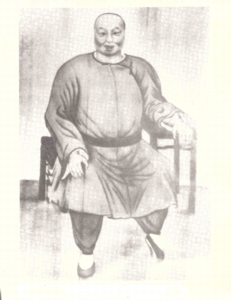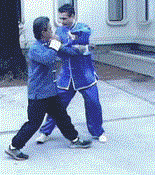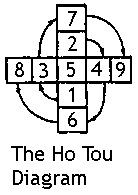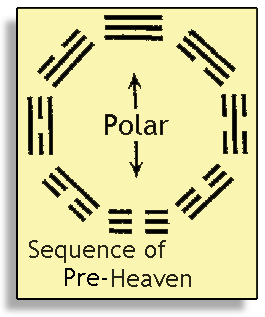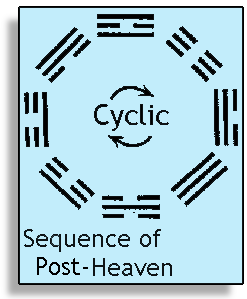|
7. Pre-Heaven Trigrams The Pre-Heaven Eight Trigrams were supposedly developed by the Emperor Fu Hsi around the year 2900 B.C. Legend has it that Fu Hsi received his inspiration as a gift from a flying dragon that came out of the Yellow River and flew up to the sky where the dragon then was observed changing his position throughout more mild and predictable seasonal changes. From these celestial observations, Fu Hsi made a connection to the rules he observed on earth. He observed the relationships between a starry night sky, changes on earth, with solar and lunar phases, and found a variety relationships and characteristics. Fu Hsi is credited with creating the polar view of Bagua, or Pre-Heaven symbol. He drew a harmonious relationship between the inhabitants of the Yellow River Valley, the cosmos, and 10,000 things or objects. As far as human being's interaction with nature during this early civilization, lives lived according to the process represented by this symbol, would be mostly harmonious and peaceful. Many different versions of the I Ching, or Book of Changes, discuss Baguazhang's theoretical implications, fortune telling and the art of placement (or Feng Shui). In this context, Fu Hsi's early observations based on polarity are still used to interpret aspects of the oracle of Bagua.

Baguazhang Application
Heaven Palm
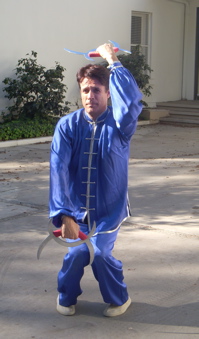
One of Our Best Sellers!
Bagua Deer Hooks on Video
|




